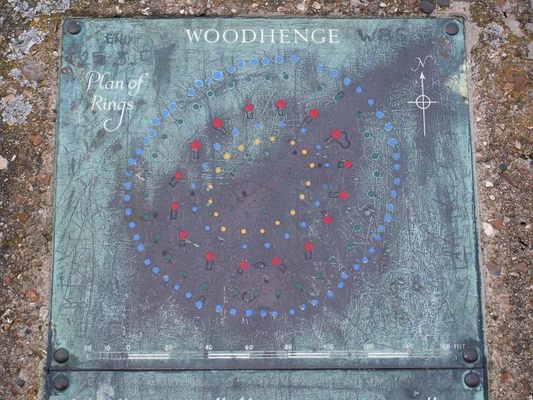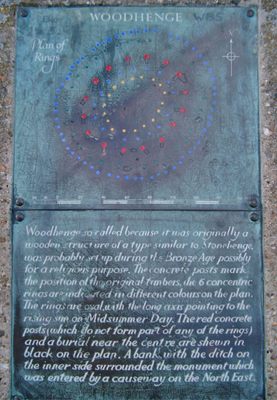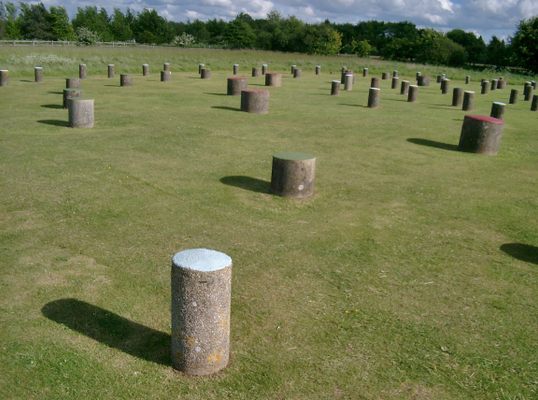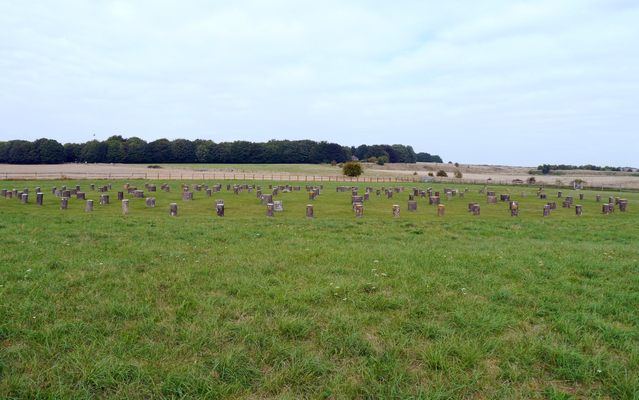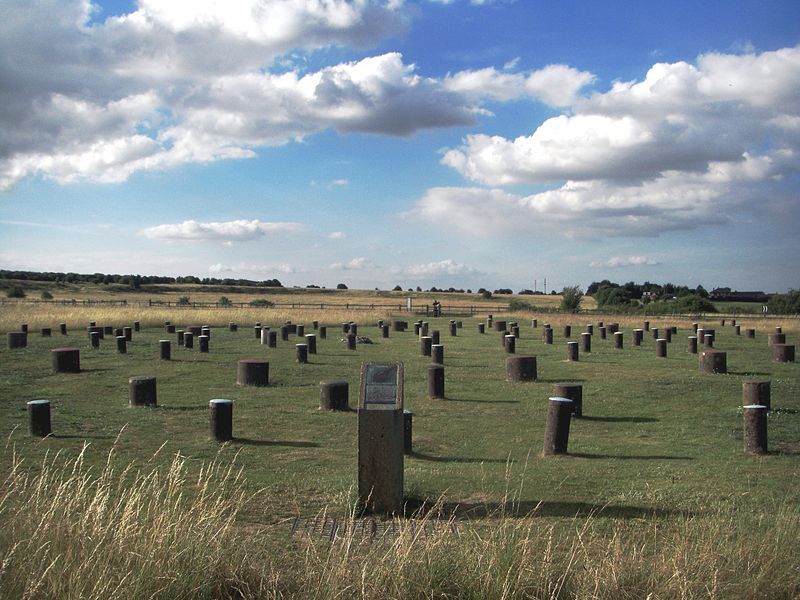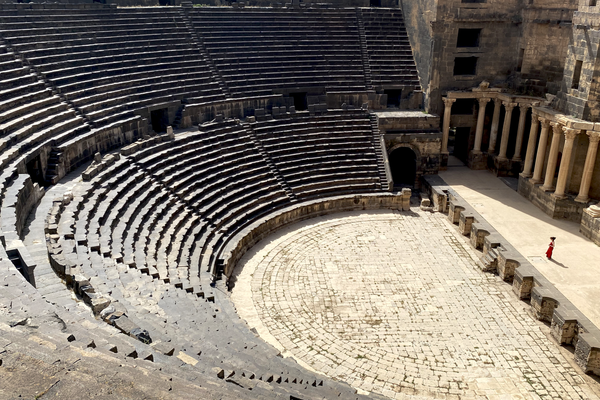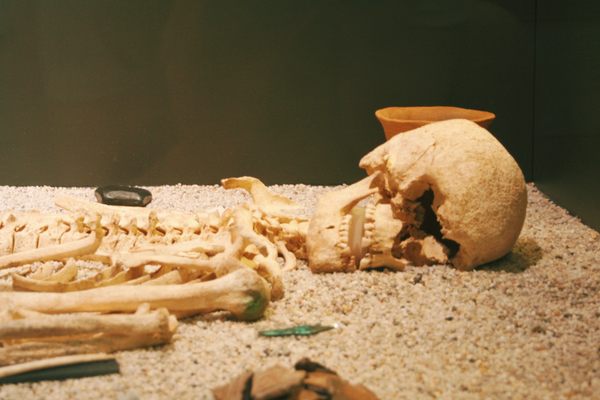About
In 1925, archaeologists Alexander Keiller and Osbert Crawford examined some aerial photographs of a wheat field near Amesbury, England, and found something intriguing: dark spots, arranged just so, in concentric circles strikingly similar to the Stonehenge monument, just a couple of miles away.
Excavations over the next few years by Welsh archaeologist Maud Cunnington revealed the spots to be the long-vacated holes for an arrangement of wooden posts. Six rings of wooden posts once stood on the site, in slightly imperfect circles, surrounded by an earthen bank and ditch. More recent excavations have revealed that it most likely also included at least five standing stones, now lost to time.
Now filled in with short concrete markers in the places where the wood poles one stood, the Late Neolithic Age monument dates to roughly the same era as the construction of its famous neighbor, possibly built slightly later by the same people between 2470 and 2000 BC. As with Stonehenge, human remains have been found at the site along with pottery and other small objects.
It is a Neolithic Class I henge, protected by Engish Heritage. It is completely open to the public with a small parking area.
Related Tags
Know Before You Go
Located between Larkhill and Amesbury, about two miles from Stonehenge. Free parking and a good walking track to Stonehenge.
Community Contributors
Added By
Published
December 1, 2013



